design interventions in south africa: the taxi workshop . . .
“johannesburg is one of the worst cities in the world in which to commute.”
[ the guardian ] are you stuck in traffic?
the economist • january 2011:
south africa’s dreadful drivers & the danger on the roads: watch out !
_____________________________________________________
the guardian and the economist are addressing road safety world-wide, in general and in particular, south africa. alternative mobility options to the automobile are lacking in south africa; traditional forms of public transportation and intermodal systems, have limited routes and delays. in this context, the most widespread form of public transportation in johannesburg and elsewhere isn’t a top down, civil engineering infrastructure development, but rather a bottom up business model that’s called the the taxi industry. this is despite that minibus taxi can be seen as relatively expensive, compared to busses and trains [excluding the newly built gautrain]. a minibus taxi rides costs 8 rand [approximately one us dollar], for a trip between major centers. the taxi’s popularity is due to its accessibility, commuters seldom wait more than 10 minutes for a taxi next to any main road and can reach most desired destinations.
in june of this year, with kyle brand assisting staff from the department of industrial design of the university of johannesburg, i lead a week long workshop on design interventions and mobility. with the industrial design 3rd year students, we looked at the role that small, but numerous design interventions might play for the majority of the population of south africa, who’s choice of a transportation system happens to be minibus taxi.
[ there are an estimated 15,000 in johannesburg alone, 120,000 minibus taxis in all of south africa. this means that at peak periods in johannesburg, possibly 200,000 people are in motion in minibus taxis. with repeated drop off and pick up of new passengers along routes, this pattern can easily be repeated throughout the day. approximately 1 million south africans in johannesburg alone use taxis each day to get to and from work. the system’s self regulating resilience and flexibility can be considered to be rather efficient. ] at the end of our workshop, the four groups of design students [siyangena non-stop • short left • taxi call • studio red] presented their concepts to industry guest, such as, andrew marsay, transport economics consultant and members of johannesburg’s taxi commission, as well as fada faculty members and their peers. examples of their design process guides are shown here:
process guide • group siyangena non-stop & group short left:
the taxi workshop process guides part one
process guide • group taxi call & group studio red:
the taxi workshop process guides part two
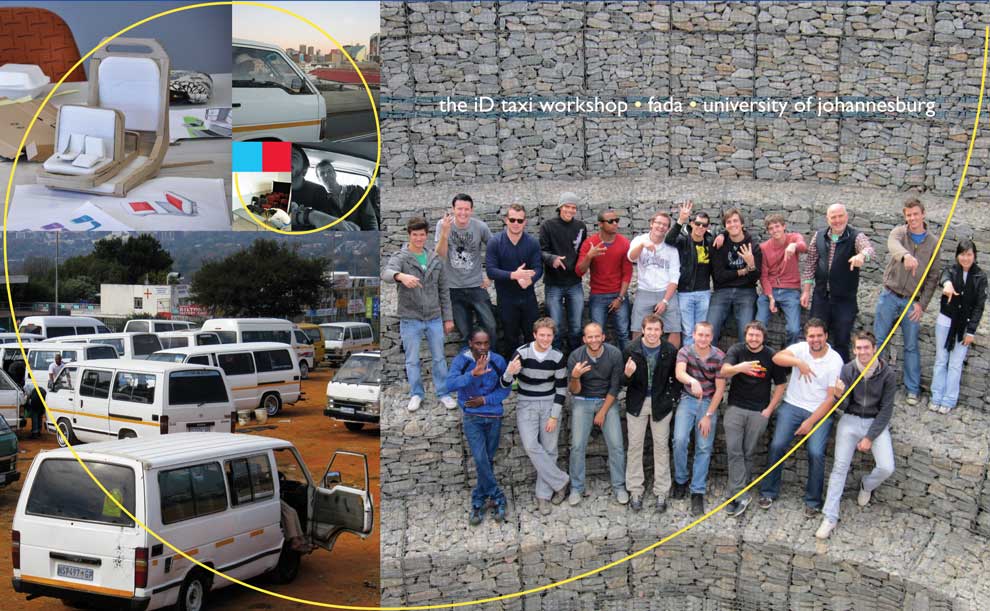
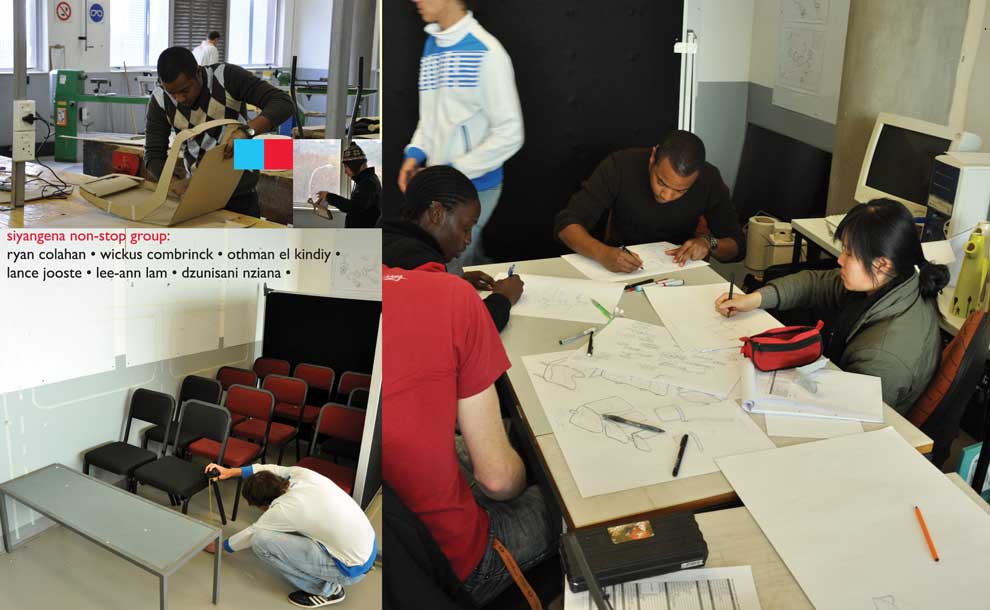
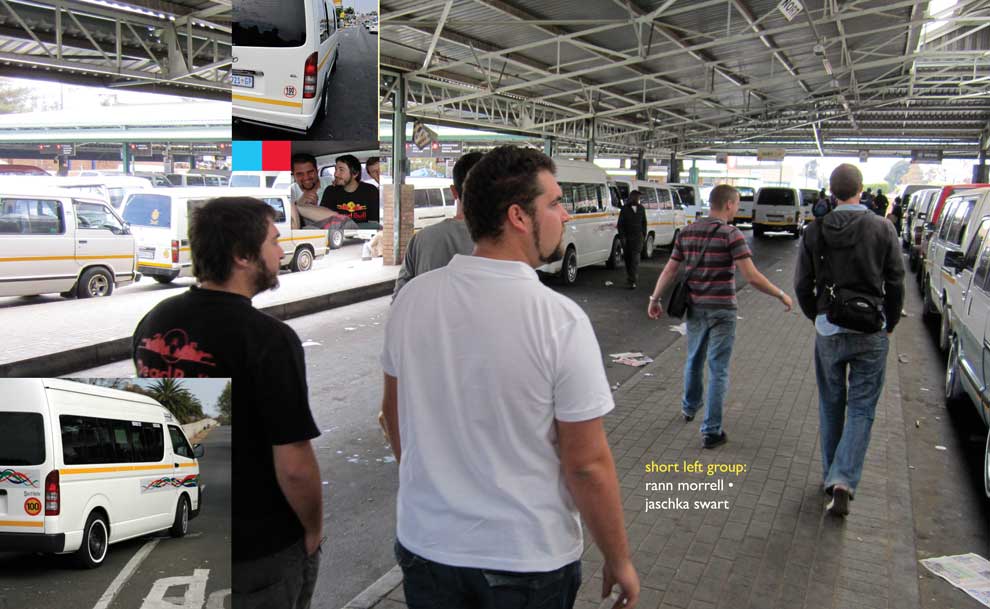
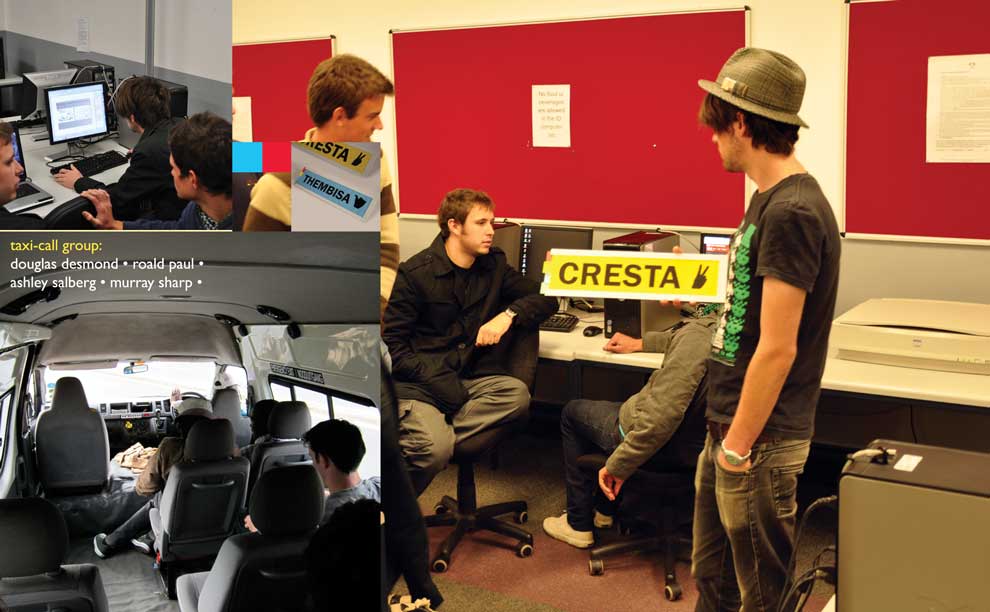
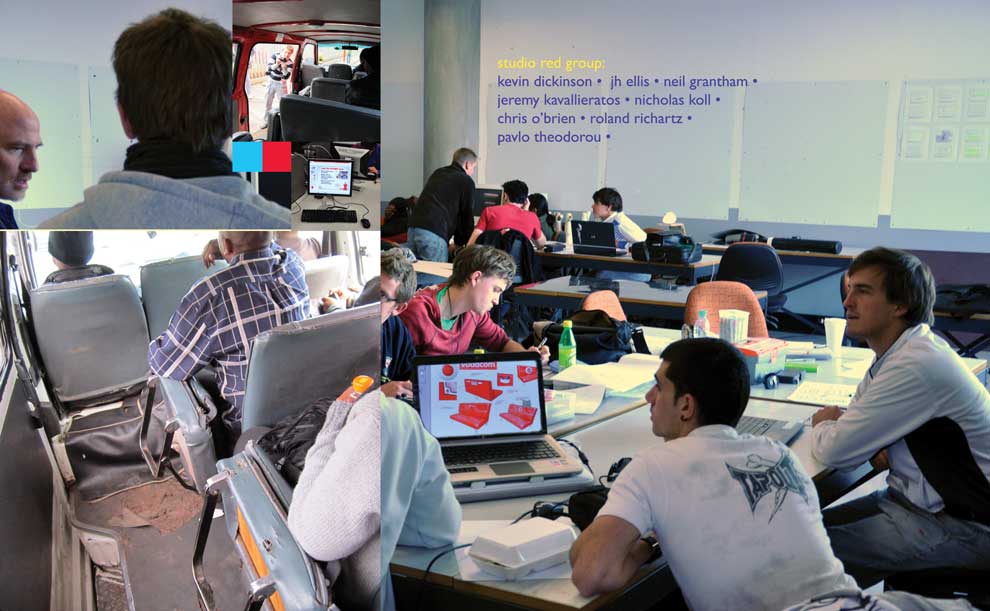
![industrial design 3rd years, at the university of johannesburg 2011, [left to right] back row: othman el kindiy, douglas desmond, jeremy kavallieratos, kevin dickinson, chris o'brien, nicholas koll, ryan colahan. middle row: rann morrell, jaschka swart, murray sharp, roald paul, ashley salberg, roland richartz. front row: dzunisani nziana, lee-ann lam, tara deacon, jh ellis, wickus combrinck, pavlo theodorou, neil grantham, lance jooste, eddie louw. photo: klye brand](http://visualsyntax.net/wordpress/wp-content/uploads/2011/07/taxi_diagram_04.jpg)
the department of industrial design’s 3rd year students [left to right]:
back row: othman el kindiy • douglas desmond • jeremy kavallieratos •
kevin dickinson • chris o’brien • nicholas koll • ryan colahan •
middle row: rann morrell • jaschka swart • murray sharp • roald paul • ashley salberg • roland richartz •
front row: dzunisani nziana • lee-ann lam • tara deacon • jh ellis • wickus combrinck • pavlo theodorou • neil grantham • lance jooste • eddie louw •
_____________________________________________________
comments from the students about the educational value of our workshop:
“the project was a fascinating insight into how the taxi industry operates; looking for problems already present, speaking to the drivers and passengers resulted in surprising solutions in one week.”
•
“the taxi project proved to be informative, great fun and allowed for real design thinking.”
•
“this was an awesome project, it taught me to try new things and to work effectively under pressure”
•
“i’m very grateful for the experience i had during the taxi project, as it exposed me to a user group (other) than i usually cater for, with my products.”
•
“during the taxi project i learned how to deal with the conflicts in a group project and maintain balance between design personalities.”
•
“good experience; it’s nice to see how people overseas do their work and the system in which they work.”
•
“thanks matthew ! the project was a lot of fun and i had a great time learning out in the field. i found the lectures to be very enthusiastic, fun and it has made for a large part of this year’s learning.”
•
“this taxi project brought a whole new light on good design quickly. it was really un-
believable what we came up with in such a short time. not only did we have some good ideas of how to improve the taxi system, but each one of us realized them and discovered how the systems works. i really enjoyed the discovery of the taxi signs. especially when we found a particular taxi driver that wanted our signage system right then and there. the responses from both regular and non-drivers towards the advantages of how a signage system, both in the taxi and on the street, would help them know where the taxi is going and therefore making the system work for those, who (would otherwise), be uncertain on where they’ll end up. it was a good time of intensive work with fascinating results.”
•
“The project worked out very well; good to be encouraged to work hard and to see the outcomes of one week’s work. working with a creative group of individuals was inspiring.”
•
“a good experience and i learned a lot.”
•
_____________________________________________________
in closing, one final reflection from me:
i would like to convey how grateful i am to the dean of the faculty of art, design
& architecture at the university of johannesburg, marian sauthoff, as well as my host, chris bradnum, the head of the department of industrial design, for allowing me the opportunity of experiencing this design workshop in south africa. i would also like to thank my assistant for the taxi project, kyle brand, as well as the fada faculty at large, for their support of this educational experiment. above all, i would like to give my sincere thanks to the industrial design’s 3rd year students. during our workshop, the 3rd year id students, advocated for a human centered contextual direction, while displaying a passion for a creative yet thorough design approach. i will look forward to hearing more/seeing more of their work, as they transition from the university of johannesburg into their professional path.
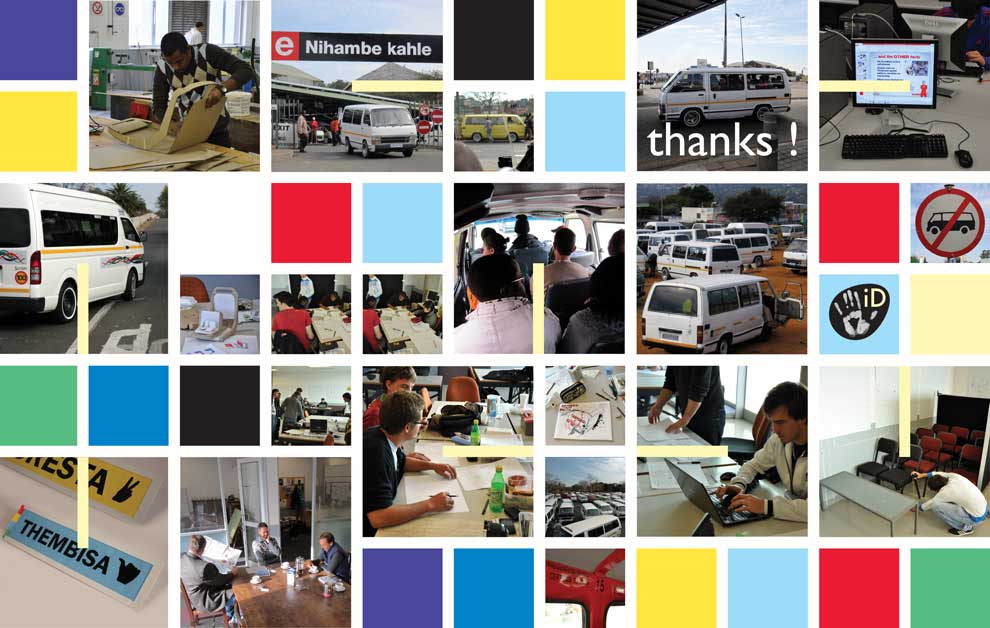
© visualsyntax. powered by wordpress.
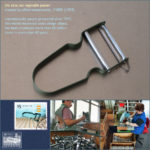



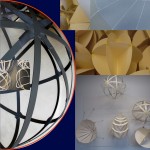
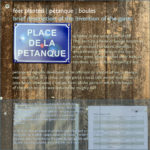


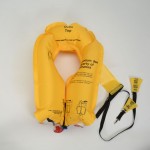
3 comments. please leave your own below.
This morgan gellasque project projects quite a serious solution to withered primitivist collectivism (dark matter) in an advent avant-garde modernist age. It should undoubtedly propel as a model yet, phages in Africa’s slow expandera.
all the best to continuing learners.
Posted by Susan Mogga
17 September 2011
this is a great project and i hope that one of these students can make contact with me as I wish to unpack further some of the issues raised. My interest is understanding how design can add value to the business of taxis. Thank you
Posted by Sisa Ngondo
5 March 2012
greetings sisa ngondo,
thanks very much for your comment & i’ll pass along this information to the folks in the industrial design department at the university of johannesburg . . .
ciao+matthew
Posted by Matthew Burger
24 March 2012
posted 8 September 2011
categories design, education